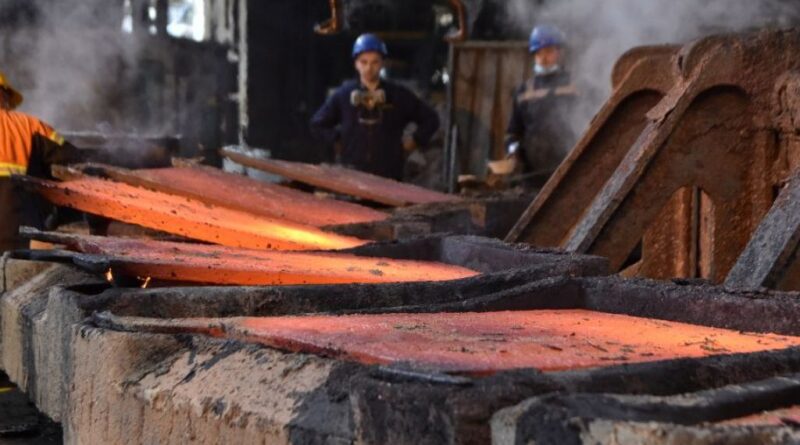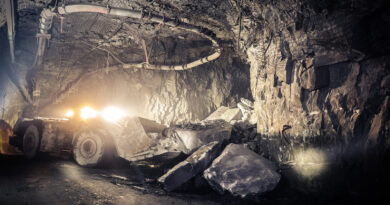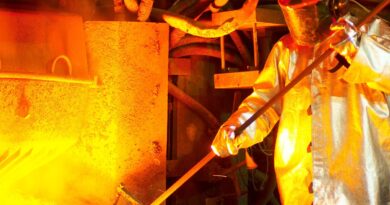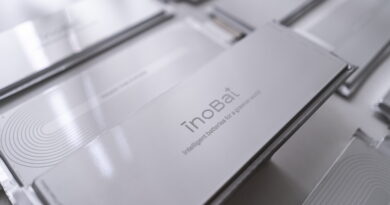First Quantum Minerals produces 91k tonnes of copper in 2Q 2025
Total copper production for the second quarter was 91,069 tonnes, a 9% decrease from Q1 2025 mainly as a result of lower production at Kansanshi. Copper C1 cash cost1 was $0.05 per lb higher quarter-over-quarter at $2.00 per lb, reflecting lower copper production volumes. Copper sales volumes totalled 101,173 tonnes, approximately 10,104 tonnes higher than production due to the shipment of 8,248 tonnes of copper from Cobre Panamá in June following the approval of the P&SM plan by the GOP.
- Kansanshi reported copper production of 40,103 tonnes in Q2 2025, a decrease of 6,441 tonnes from the previous quarter due to lower feed grades despite an increase in mill throughput. Sulphide grade for the quarter was lower, mainly as a result of the reclassification of sulphide ore to mixed ore in the Main 15 cutback and at the same time a portion of the volume mined was downgraded from high grade to low grade. However, the milled tonnage in the S2 sulphide circuit increased by approximately 3,300 tonnes per day when compared to Q1 2025 based on continuous improvement of the ore fragmentation during blasting. As expected, the planned 40-day smelter shutdown, which commenced at the beginning of June, reduced acid availability and limited ore feed flexibility. As a result, mixed ore was fed through the oxide circuit for the entire month of June. The smelter returned to operation in early July. Gold production continued to be strong at 27,764 ounces in the second quarter driven by the upgrade of two existing gravity concentrators and the installation of a new gravity concentrator, which was commissioned late in the first quarter of 2025. Copper C1 cash cost1 of $1.47 per lb was $0.13 higher quarter-over-quarter as a result of lower production. Production guidance for 2025 remains unchanged at 160,000 to 190,000 tonnes of copper and 100,000 to 110,000 ounces of gold. Copper and gold production in 2025 includes production associated with the Kansanshi S3 Expansion, with first production expected in the second half of 2025. The majority of the initial feed for S3 will be sourced from low-grade stockpiles. Guidance for gold production does not include potential production from the newly identified near-surface gold zone occurrences in the South East Dome area.
- Sentinel reported copper production of 43,108 tonnes in Q2 2025, 3,253 tonnes lower than the previous quarter due to the mining of lower grades from Stage 3. Total throughput improved quarter-over-quarter despite a 4-day planned shutdown as the downtime related to the Train 2 Ball mill flange bolt fatigue issues, identified during the first quarter, were addressed in close collaboration with the original equipment manufacturer and specialist engineering consultants and the Company is in the process of finalizing a corrective procedure on the affected Ball mill. Copper C1 cash cost1 of $2.77 per lb was $0.22 higher than the preceding quarter as a result of the lower production volumes. During the second quarter of 2025, Sentinel began installation of an innovative low-energy consumption conveyor technology utilizing rail carts in replacement of traditional idlers. The rail run conveyor (“RRC”) system is expected to commence with commissioning in late 2025. The RRC is expected to draw potentially 50-70% less power than traditional conveying. 2025 copper production guidance remains unchanged at 200,000 to 230,000 tonnes. The focus at Sentinel will continue to be on increasing total throughput with various ongoing initiatives. Grades for the year are expected to be lower than 2024, but expected to be relatively higher in the second half of 2025 as mining progresses to the bottom of the Stage 1 pit for sump development ahead of the wet season. Stage 3 will supply a majority of the ore with lower volumes of ore to be derived from Stage 1 and Stage 2 compared to prior years. As mining progresses deeper in Stage 3 over 2025 and 2026, the impacts of weathering will reduce and the material feed to the plant is expected to more closely resemble current feed from Stage 1 and 2.
- In the second quarter of 2025, Enterprise produced 4,018 tonnes of nickel, a 14% decrease over the previous quarter due to lower throughput and grades. Grades continued to be impacted by a change in the mining sequence and deployment of permanent ramps to widen the footprint, resulting in a higher proportion of transitional ore from the South Wall area. Nickel C1 cash cost1 of $5.83 per lb is $1.05 higher than the previous quarter due to lower production volumes and higher mining contractor costs. 2025 production guidance remains unchanged at 15,000 to 25,000 contained tonnes of nickel. The focus for 2025 continues to be on maximizing ore supply and comminution efficiency to increase throughput and reduce operating cost per unit. In response to the challenging economic conditions for the nickel market, the mining strategy for the year has been revised to minimize waste stripping while maintaining nickel production within guidance. Another key focus area will be improving plant performance in dealing with the complex nickel ore types.
KANSANSHI S3 EXPANSION
- The Kansanshi S3 Expansion project reached the final stages of commissioning with first ore fed through the expansion operations ahead of schedule. The project remains on budget and on schedule for first production in the second half of 2025. The Company has now passed the peak of capital expenditure with cash spending expected to decline as the project advances towards completion.
- During the second quarter of 2025, commissioning of the dry plant and mills progressed well. First ore was fed to the primary crusher onto the crushed ore stockpile during the quarter and subsequently through the semi-autogenous grinding (“SAG”) mill and the rougher flotation circuit in July, ahead of schedule. Water runs in the wet plant continued, including filling the rougher flotation cells, tails thickeners and the raw water clarifier. Construction work continues with a focus on completing non-process infrastructure and readying the site for ongoing operations.
- The project achieved 91% construction completion and 50% of systems have been handed over to commissioning. Configuration of the plant control system is at 92% completion with a focus on site live sequence and functionality testing. Operational readiness is 93% complete with all employment requirements fulfilled. The transition from a readiness team to the operational team has begun and operators and maintenance personnel have commenced controlled plant runs.
KANSANSHI EXPLORATION UPDATE
- At Kansanshi, the Company continued the program to evaluate the new near-surface gold zone occurrences in the South East Dome area. Recent work has identified the presence of near-surface gold mineralization with a thickness ranging from one to nine meters, with a northwest strike length of 7.5 kilometres, which directly overlies and extends outwards of the primary copper-gold deposit. Deportment studies suggest that the gold is generally very fine grained, but with some associated coarser particles having a typical gold mineralization ‘nugget effect’ which needs to be considered during sampling, analysis and ultimately for grade estimation purposes. The style of mineralization requires a larger than typical sample together with careful sample collection and analytical methods that address both the nugget effect as well as risks to detecting the fine gold component. The exploration test work is ongoing with the intent to work towards defining the resource for the near-surface gold zone occurrences.
- Preliminary results from bulk samples processed in the existing Kansanshi gold facilities and a small-scale bulk testing plant have generated encouraging results to date, enabling the rapid deployment of interim bulk sampling facilities on site. The Company is accelerating additional test work, including in-situ sampling and analysis on large diameter diamond drilled core samples, as well as additional bulk sampling. In addition, a high resolution airborne electromagnetic survey has been completed to assist in delineating the position, extents and quality of the near-surface gold zone occurrences. The Company has initiated work on a pilot plant with an estimated completion later this year, which is intended to support processing of the gravity gold mineralization.
- Work related to the newly defined near-surface gold zone occurrences and the potential gold production is independent of the existing Kansanshi copper and gold operations and the S3 Expansion project. The new near-surface gold zone occurrences are not currently included within the Company’s Mineral Resources and Reserves, the Kansanshi mine plan or guidance.




